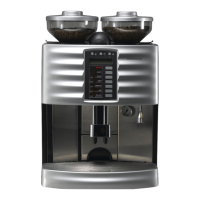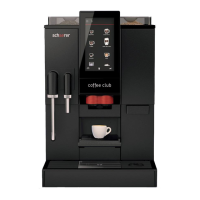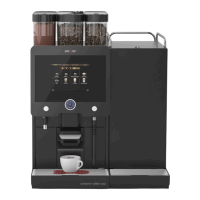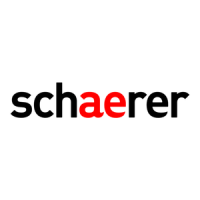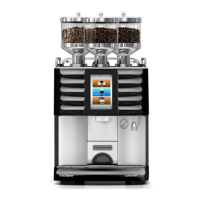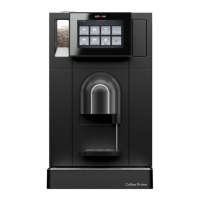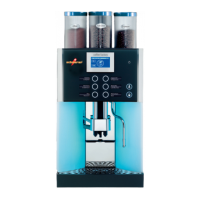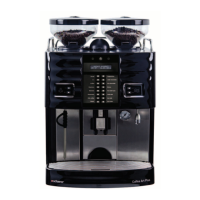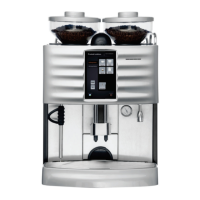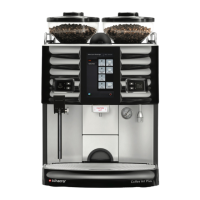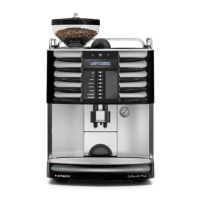What does 'EEPROM error' mean on Schaerer Coffee Maker?
- CCaitlin DanielsSep 1, 2025
If your Schaerer Coffee Maker displays an 'EEPROM error', this indicates a system error. Switch the machine off and back on.
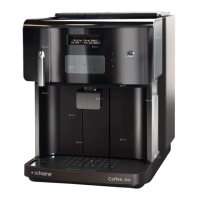
What does 'EEPROM error' mean on Schaerer Coffee Maker?
If your Schaerer Coffee Maker displays an 'EEPROM error', this indicates a system error. Switch the machine off and back on.
Why is milk too hot or has bubbles in Schaerer Coffee Joy Coffee Maker?
If the milk is too hot, the quantity is too low, or the milk foam has bubbles in your Schaerer Coffee Maker, ensure you are using pre-cooled milk (3 – 5°C) and cool the milk constantly during use. Also, check if you are using the correct milk nozzle and change it if needed.
Why is the brewing unit difficult to pull out and slide back in my Schaerer Coffee Joy Coffee Maker?
If the brewing unit of your Schaerer Coffee Maker is difficult to pull out and slide back in, it might be because the brewing unit is stiff. Remove the brewing unit. There are two nozzles with black sealing rings on the inside of the machine. Grease the sealing rings with grease from the accessories. Put the brewing unit back in place.
What to do for motor driver fault in Schaerer Coffee Joy Coffee Maker?
If you encounter a motor driver fault with your Schaerer Coffee Maker, switch the machine off and then back on.
Why is the water tank hard to slide in Schaerer Coffee Maker?
If the water tank of your Schaerer Coffee Maker is difficult to slide in place, the O-ring on the water outlet connector may need to be greased. Grease the O-ring with grease from the accessories.
Why does my Schaerer Coffee Maker say 'place brewer'?
If the display indicates to place the brewer in your Schaerer Coffee Maker, it means the brewing unit is not inserted. Insert the brewing unit.
Why does the pump in my Schaerer Coffee Maker make loud noises?
If the pump in your Schaerer Coffee Maker makes loud noises, it might be because there is too much air in the pipes. Dispense a cup of hot water to bleed the pipes.
Why is the milk from my Schaerer Coffee Joy too hot or has bubbles?
If the milk from your Schaerer Coffee Maker is too hot, the quantity is too low, or the milk foam has bubbles, it could be because the milk in the milk container is too warm. Only use pre-cooled milk (3 – 5°C) and cool the milk constantly during use. Also, the wrong milk nozzle might be in use, change the milk nozzle.
Why does the coffee from my Schaerer Coffee Joy Coffee Maker have no crema?
If your Schaerer Coffee Maker is not producing crema, it might be because the coffee is no longer fresh, replace the beans. Alternatively, the grind level could be too coarse, set the grind level to a finer setting.
What to do if clear flow stopped in Schaerer Coffee Joy?
If the clear flow has stopped in your Schaerer Coffee Maker, it could be due to several reasons. First, try dispensing a cup of hot water to bleed the pipes. If that doesn't work, clean the sieve of the water filter, and if the problem persists, change the water filter. Also, the non-return valve at the outlet of the drinking water tank may be contaminated, clean the outlet and the non-return valve with one of the small brushes in the accessories. The brewing unit could be clogged, remove and clean the brewing unit. Finally, the grind level might be too fine; set it to a coarser setting and clean the brewing unit.
| Bean hopper capacity | 500 g |
|---|---|
| Water tank capacity | 2.5 l |
| Pump pressure | 15 bar |
| Type | Automatic Coffee Machine |
| Power supply | 220-240 V, 50-60 Hz |
Welcome message and overview of the operating instructions' purpose.
Explanation of danger and warning symbols used throughout the manual.
Defines the purpose and scope of the coffee machine's operation.
Lists the various beverages the machine can dispense and their output.
Details the items included with the coffee machine and available accessories.
Describes available optional features and add-on accessories for the machine.
Provides key technical specifications and data for the coffee machine.
Information on the serial plate, conformity, and applied standards.
Instructions for positioning and preparing the machine's installation site.
Requirements for the machine's operating environment and electrical connection.
Details on electrical power needs and water supply/draining conditions.
Steps for unpacking, installing mains water, and connecting the milk system.
Step-by-step instructions for initial machine setup, language, and date.
Configuring water filter, heating, and procedures for deinstallation.
Pre-operation checklist for machine readiness and filling components.
Procedures for powering on the machine and initial system rinse.
How to prewarm cups and adjust the beverage outlet height.
Instructions for selecting and dispensing various coffee and milk beverages.
Methods for dispensing hot water, milk, foam, and double beverages.
Instructions for using ground coffee and selecting coffee strength.
Procedures for emptying containers and safety during transport.
How the machine communicates status and issues to the user.
Procedures for properly turning off the machine and handling downtime.
Overview of daily, weekly, monthly, and automatic cleaning schedules.
Daily cleaning procedures for coffee system, milk system, and containers.
Detailed steps for weekly machine program and monthly brewing unit cleaning.
How to clean the bean hopper and the machine's outer surfaces.
Cleaning optional units and performing warm-up rinsing.
Hygiene regulations and HACCP cleaning concept for food safety.
Information on cleaning tablets, Milkpure, and descalers.
Guidelines for cleaning regulations and maintaining a cleaning schedule.
Step-by-step procedure for descaling the coffee machine with safety warnings.
How to adjust grind level and install an optional water filter.
Detailed steps for installing and changing the water filter.
Information on regular maintenance and notifying the service partner.
Explanation of navigation, PIN entry, and programming menu overview.
How to adjust cup size, water volume, and coffee strength.
Settings for milk volume, sequence, rest period, and pre-brewing.
Configuring machine language, time, and date settings.
Configuring automatic switch times, water hardness, and filter usage.
Adjusting brewing temp, factory reset, PIN, and counters.
General procedures and troubleshooting for display messages.
Detailed table of display messages and their corresponding solutions.
Troubleshooting issues that do not generate on-screen error messages.
Explains water's impact on taste and machine, and specifies required values.
Methods to test water hardness and the role of filter technology.
Overall safety guidelines, electrical hazards, and preventing light injuries.
Safety for pinch points, cleaning products, storage, and disposal.
Preventing machine damage and ensuring water hygiene.
Guidelines for safe handling and hygiene of coffee and milk.
Operator responsibilities for maintenance and warranty/liability conditions.
